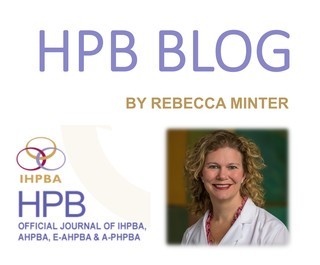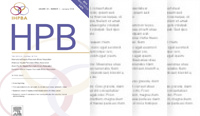International Hepato-Pancreato-Biliary Association
HPB Blog, November 2017

Improving our Optics on Predicting Outcomes
With advances in our ability to perform complex hepatobiliary and pancreatic operations in patients with increasingly advanced disease, careful patient selection utilizing multiple optics is critical to optimizing outcomes. In the current issue of HPB, several authors critically evaluate prognostic indicators and imaging features which predict (or fail to predict) a patient’s peri-operative and longterm outcome.
The appropriate selection of patients for surgery with advanced hepatobiliary and pancreatic malignancy is paramount to achieving outcomes which result in improved quality and quantity of life. Counseling patients faced with these difficult decisions requires prognostic information which can support informed decision-making regarding treatment options and the potential morbidity and outcomes of each. This month in HPB Wen and colleagues evaluate the role of CEA and CA 19-9 in predicting an R0 resection and overall survival in patients with apparent resectable gallbladder cancer. The Heidelberg group describes the selection of patients with locally advanced pancreatic adenocarcinoma who benefit from exploration and resection, and describe an artery preserving operative approach which they call the TRIANGLE operation. In patients with unresectable hilar cholangiocarcinoma, Gaspersz and colleagues evaluate the validity of poor prognostic factors on predicting conditional survival over time.
Two articles focus on the evaluation of peri-operative risk factors for anticipating increased morbidity and mortality following hepatic resection and pancreaticoduodenectomy. Stiles et al. evaluates predictors and implications of unplanned conversion during minimally invasive hepatectomy utilizing data from the ACS-NSQIP HPB module, and Watanabe and colleagues evaluate the impact of decreased preoperative FXIII activity on bleeding during pancreaticoduodenectomy. Prospective collection of these peri-operative data elements will allow us to better understand how we can continue to improve peri-operative outcomes in HPB surgical patients.
As imaging technology continues to evolve, more and more information can be gleaned pre-operatively. Imaging techniques and features can begin to provide information about potential tumor biology and other information beyond simple resectability status. In this month’s issue, Zamboni et al. evaluate CT features associated with tumor grade, and describe features which allow for the identification of low and high grade pancreatic neuroendocrine tumors. Jhaveri and colleagues then report on the predictive ability of gadoxetic acid-enhanced liver MRI in the identification of less than 1 cm colorectal metastases following chemotherapy. They found that Eovist enhanced MRI may alter the surgical plan in almost half of the patients with colorectal liver metastases scheduled for liver resection following chemotherapy.
Two additional studies this month focused on standardization and regionalization of HPB surgical care. Kagedan et al. report on the economics of implementing an enhanced recovery pathway after pancreatic surgery, and report significant reduction in direct costs in patients treated on a pathway versus those not. Salami, Alvarez, and Joshi then explored the application of guideline standards for patients treated in various regions of the United States with a diagnosis of pancreatic adenocarcinoma. The continued challenge of centralization of HPB surgical care is further highlighted in a letter to the Editor which follows authored by Ansari, Dervenis, Friess, and Andersson.
Read all of these articles and more in the November Issue of HPB!
Corporate Partners
If you are interested in becoming a Corporate Partner of the IHBPA please contact industry@ihpba.org
Find out more


